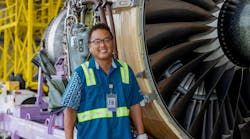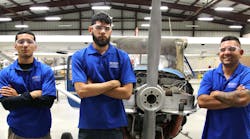As a U.S.-based publication AMT has a natural focus on aircraft maintenance activity relating to North America. Yet travel most anywhere in the world and you will soon find both long-established and emerging aviation industries.
The International Civil Aviation Organization (ICAO) with member nations around the world establishes civil aviation standards for safety and other operating matters including the much discussed safety management system (SMS) requirements. The European Aviation Safety Agency (EASA) was born as a result of the European Union’s desire for a common regulatory and administrative body relating to civil aviation safety matters within its member states.
Last month the U.S. and the EU completed a final step in an agreement aimed at more cooperation, a reduction of redundant activity and approvals, and at streamlined processes relating to certification and maintenance. Regardless of which side of the world you live or which side of the many bilateral issues you stand, the fact remains that operators, manufacturers, businesses, MROs, authorities, and aviation professionals around the world continue to work closer together and many industry activities are becoming more aligned.
The Federal Aviation Administration (FAA) has had for many years international field offices (IFO) with a variety of responsibilities. In February I attend the Inspection Authorization (IA) renewal seminar held by the FAA IFO in Frankfurt, Germany. I was told there are approximately 170 A&P certificated aircraft technicians who hold an IA throughout Europe, Africa, and the Middle East countries. In attendance were 66 of these aircraft maintenance professionals, a mix of general aviation technicians, business aircraft operators, ex-patriots from the U.S. working overseas, and MRO and airline technicians very much like many of us.
FAA inspectors spoke on topics from proper use of FAA Form 337 to the definition of major/minor similar to any FAA seminar I’ve attended here in the States. John Benning, the IFO manager, opened the session by reading the Aircraft Mechanic’s Creed and spoke of Charles Taylor and the Master Mechanic’s Award program. Benning stressed to the audience, “Don’t underestimate the value of these seminars. There are many options today for IA renewal but the value that is gained from networking with others during a session like this is priceless.”
I couldn’t agree more and am honored to have spent the day with so many aircraft maintenance professionals. By the way, two of the people in attendance were current AMTSociety members.
Articles in this issue include Stephen Carbone on the Maintenance Implementation Procedures under the Bilateral Aviation Safety Agreements; MRO Operations describes the new Lufthansa Technik (LHT) A380 maintenance facility in Frankfurt; and Barry Ballenger and Majella McDonald on SMS. On the technical side, Larry Jackson offers his best practices tips relating to weighing aircraft, and AMT field editor Charles Chandler talks about the old reliable Pratt & Whitney R985 radial engine.





